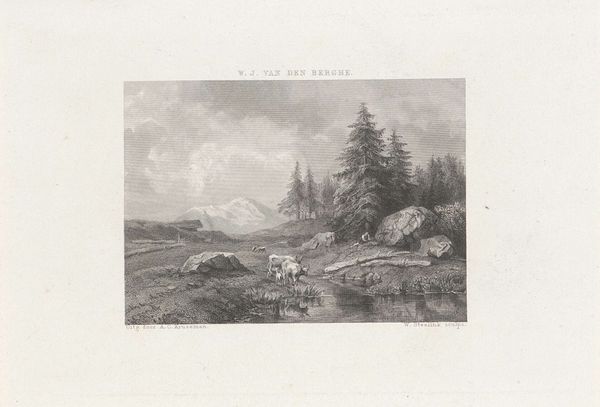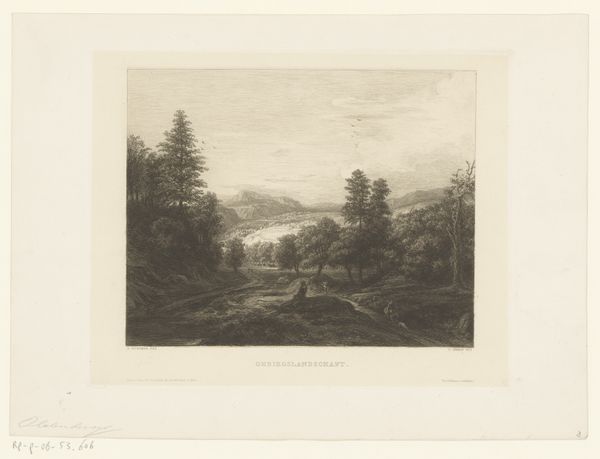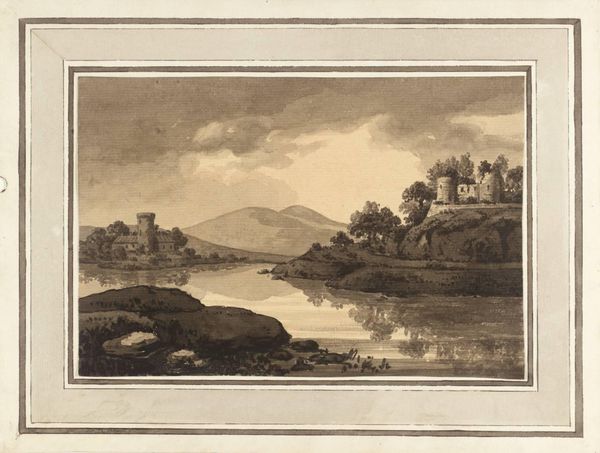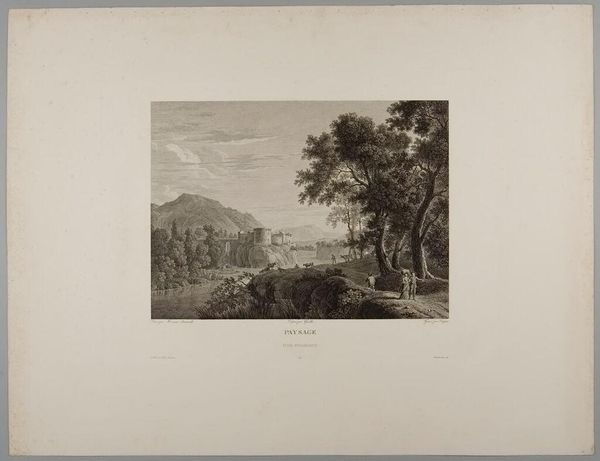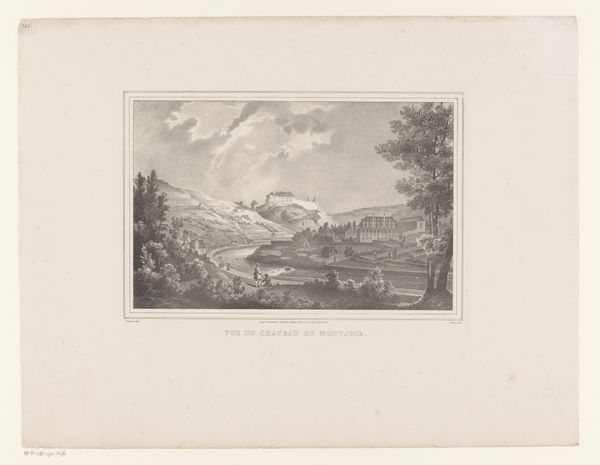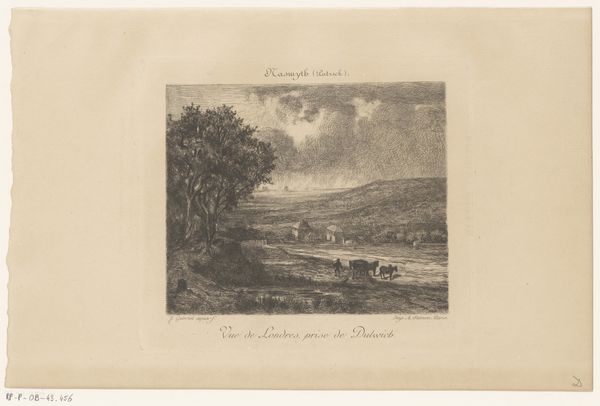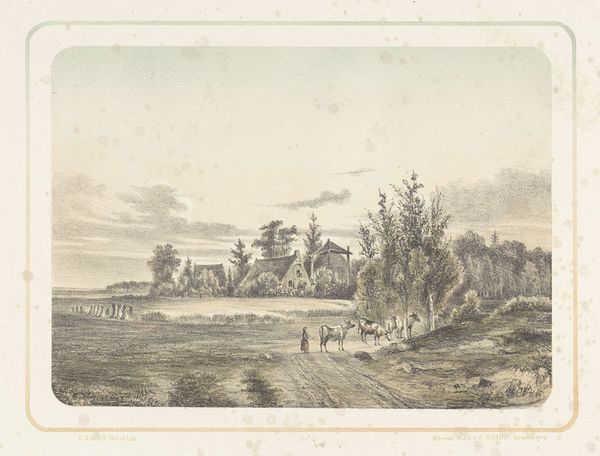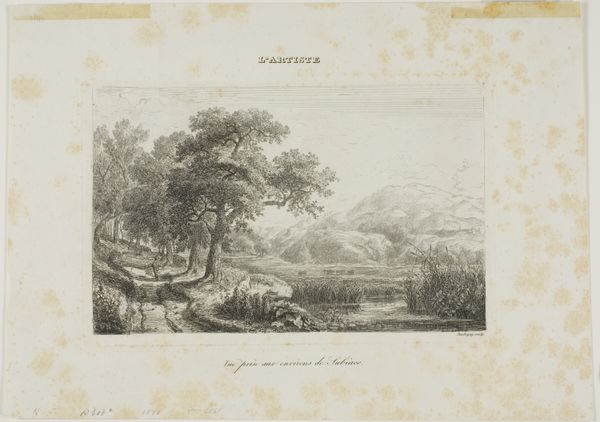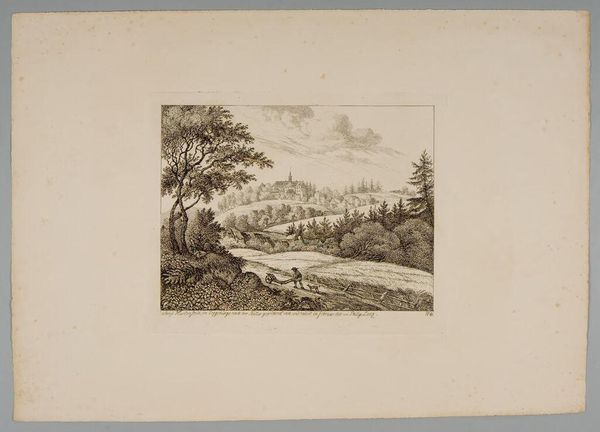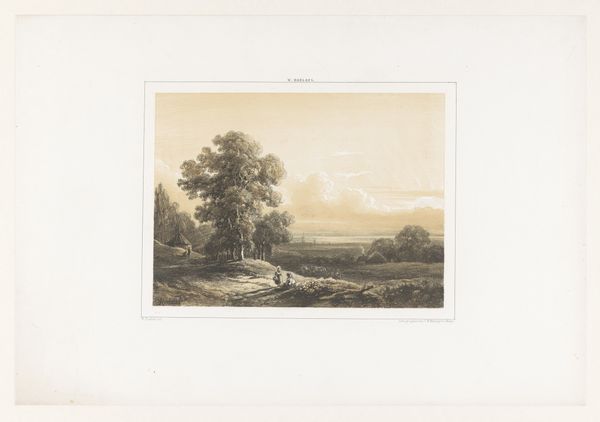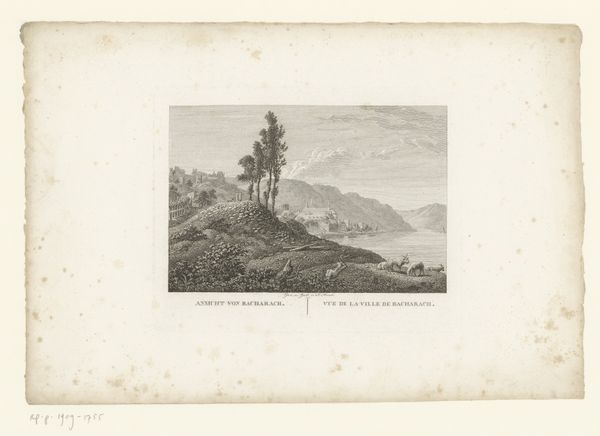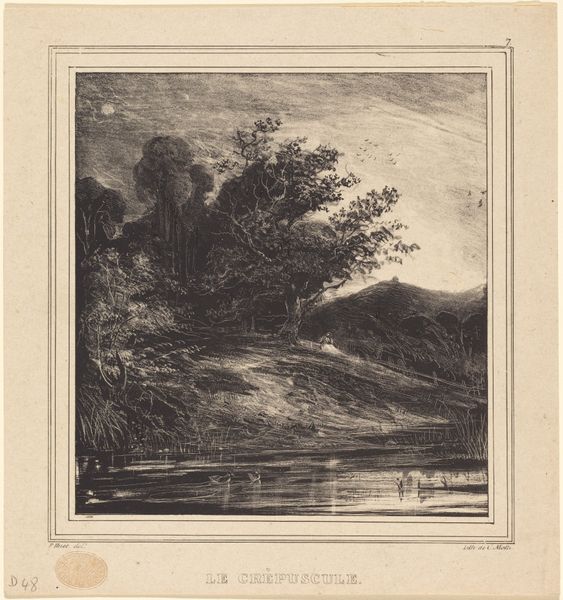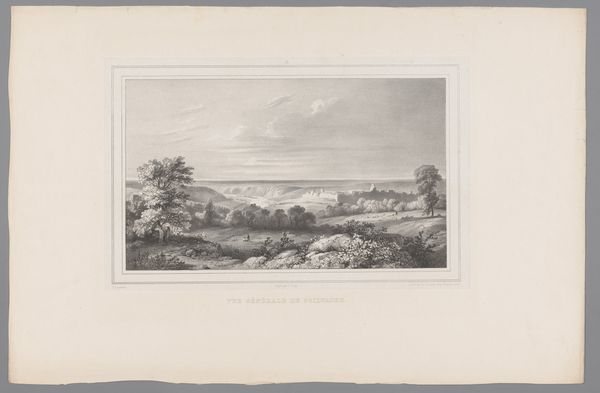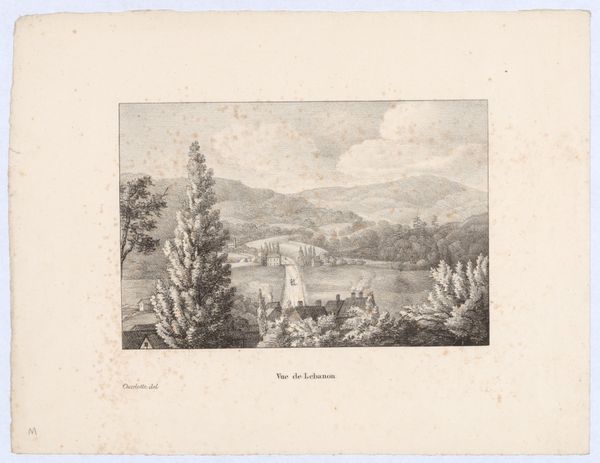
#
photo of handprinted image
#
toned paper
#
muted colour palette
#
white palette
#
charcoal drawing
#
possibly oil pastel
#
charcoal art
#
carved into stone
#
mountain
#
tonal art
#
watercolor
Dimensions: height 115 mm, width 176 mm
Copyright: Rijks Museum: Open Domain
Curator: Looking at this muted landscape, there’s almost a feeling of isolation. The composition feels quite traditional. Editor: Indeed. This is "Landschap met een beek", or "Landscape with a Stream", created sometime between 1842 and 1873 by Willem Frederik Wehmeyer. It’s a scene rendered with considerable precision. I’m particularly drawn to how the materials used--probably charcoal and watercolor--emphasize texture. Curator: That precision interests me, too, specifically in terms of its cultural context. These constructed landscapes, they reflected a certain idealized vision of nature and the societal values embedded within it. Who was allowed to access this vision, who benefited from it? Editor: That’s interesting. I tend to look at it more practically, the tonal contrasts achieved likely took numerous carefully layered applications of pigment. This would affect labor, because obviously that would create cost to the image itself. Curator: Perhaps. Though if we look through the lens of critical race theory, these seemingly neutral landscapes weren't neutral at all. Their construction often relied on overlooking colonial exploitation and the displacement of indigenous populations. Editor: Well, the artwork appears to focus on depicting nature with clarity. To me the manufacturing choices highlight the human impact on the scenery itself. Curator: Absolutely. The deliberate choices reflect the complex interaction between the artist, their materials, and their surrounding culture. Editor: Seeing Wehmeyer's creation from a purely material perspective shows that craft isn't so different from high art; a very clear message! Curator: Examining these intersections, these dialogues between visual representation and material creation helps to broaden our understanding of how our visual culture shapes our perceptions. Thank you! Editor: To really appreciate this landscape it's also worthwhile to consider all the means it would take to get the pigments at that time. Thank you.
Comments
No comments
Be the first to comment and join the conversation on the ultimate creative platform.
